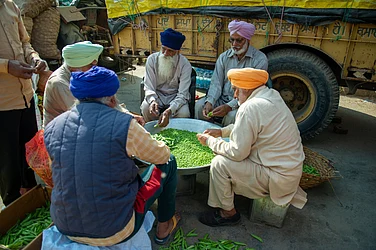What has made the Aam Aadmi Party so potent in the city state of Delhi? And how has the chemistry changed in the city that voted overwhelmingly for the party of Narendra Modi in the general election last year? Here are 10 reasons for the AAP phenomenon.
Kejriwal, Kejriwal, Kejriwal: The old Bollywood classic Sholay has a dialogue most of us would remember—Loha lohe ko katata hai (iron cuts iron). The success of the BJP now hinges around the cult of Narendra Modi and it’s a chicken and an egg question to ask what came first. Never before has India had a Supreme Leader whose image is omnipresent, particularly in the national capital. An average citizen cannot travel from home to office without seeing at least one Modi poster, if not 10 or more. AAP could not have posed a challenge without a charismatic leader of its own and they have that in Kejriwal.
The asymmetry: When Modi was fighting his first election in Gujarat after the 2002 riots, he would say at public rallies, “Five CMs have come to remove one CM. They are all after one man.” He actually elicited sympathy from his supporters for being one man against the lot of them! Now he has trotted out the entire cabinet and 120 MPs to combat a small party just born the other day, the BJP clearly going for an overkill that has only generated sympathy for the underdog.
Hollow accusations: The BJP ran the most expensive media campaign in India’s history that culminated in the election of Narendra Modi as prime minister. The party spent over `700 crore on the campaign, according to expenditure estimates filed with the Election Commission. Where did the money come from? The public shall never know as the BJP (and the Congress) are one in opposing the extension of the Right to Information to political parties and their funding. But they were in hysterics over a `2 crore donation to AAP. The day after the ‘scam’ was highlighted, AAP sent out an e-mail to registered members saying there was a cash crunch and if they would donate. People did so in a city where they are generally sick of politicians.
Volunteerism: The BJP springs from the largest cadre organisation in the world, whose members demand their pound of flesh. AAP has been able to instil a sense of engagement in volunteers who work in their own time for no financial reward. They are ordinary citizens who engage because AAP has made it possible for outsiders to actually break into politics and sell the dream of a more genuine people’s participation. As the campaign has progressed, more and more AAP offices have sprung up across the city.
Traditional political pyramid: The BJP’s arithmetic in the age of Narendra Modi is based on getting first past the post by carrying the middle classes, the rich and a small section of the poor. The AAP formula is more traditional: get the poor and break a section of the middle class.
Civic engagement: AAP has in the course of a year held Delhi dialogues, public meetings, private interactions with all sections of society. People get the impression they would address issues such as garbage collection, public encroachments and pollution with greater application. Indeed, AAP has added a certain glamour to the process of addressing mundane civic issues.
Beyond caste and community: There is a new grammar that AAP uses that can best work in a metropolis. They do not spring from the bandwidth of a particular caste or coalition of castes and communities. That is particularly unusual. If we go by the set rules of Indian politics, they should have been a non-starter. But they are changing the traditional rules of political engagement.
Media management: For a while, AAP didn’t engage with certain media houses and channels who they believed had it in for them. Midstream into the election, that strategy has very sensibly been dropped and AAP spokespersons and Kejriwal himself are engaging with most media houses.
Getting the message right: Because AAP has so many professionals on board, they have finally got the advertising message right. They may not be able to book as much ad space on radio, print and hoardings as the BJP, but their ads have struck the right chord.
Ground campaign: That’s actually where AAP began the race before anyone else. It has been gritty with others besides Kejriwal hitting the roads of the capital and drawing crowds. The best political trick is to look like a winner, which then attracts the fence-sitters to your side. AAP is usually seen as an anti-capitalist force that embraces the poor but there’s something beyond a battle of the classes happening in Delhi. Many middle-class folk too who voted BJP just months ago are attracted to a party and a leader who have shown the ability to capture the imagination. By the time polling came to an end and this magazine closed its issue, the only options before AAP were historic victory or honourable defeat.
























